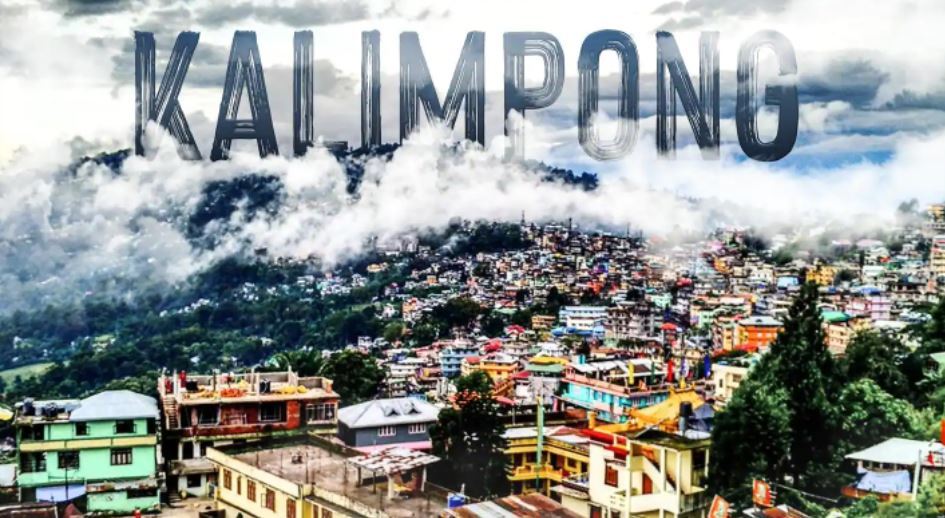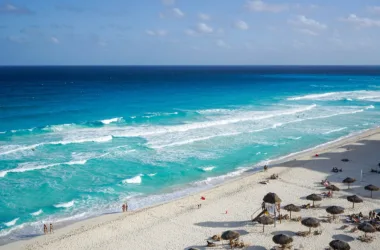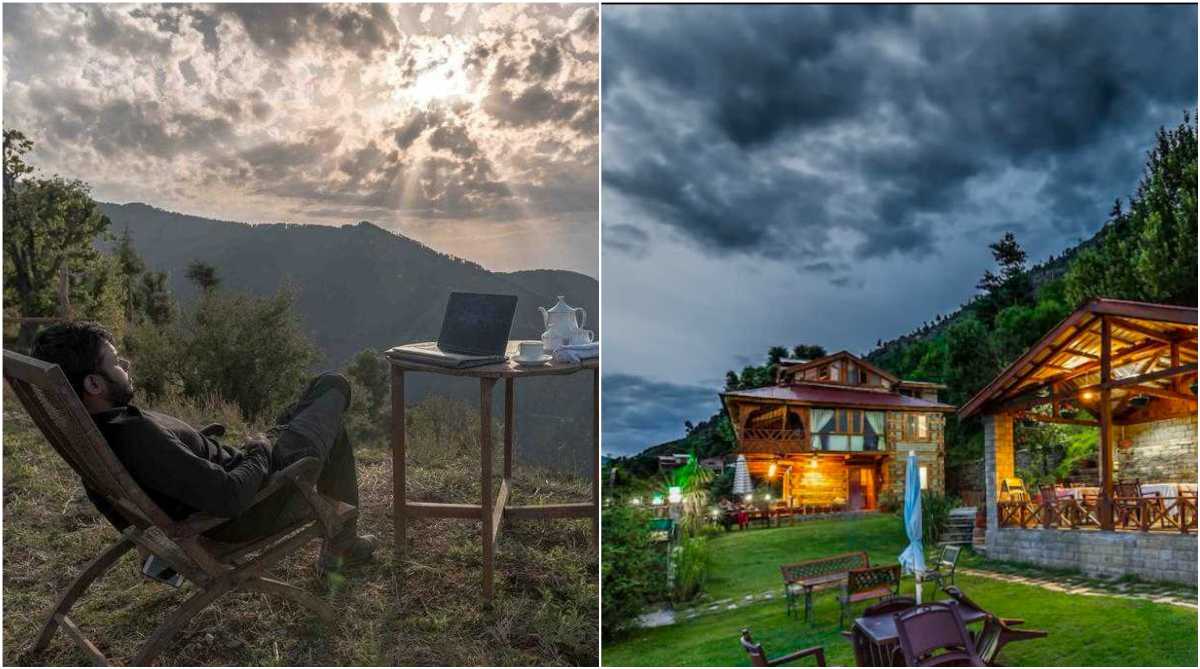Kalimpong Complete Guide: Kalimpong, in West Bengal, is 1,247 meters (4,091 ft) above sea level on a remote ridge in the foothills of the Himalayas, with the Teesta River at its base. The city’s location offers spectacular views of Mount Kangchenjunga (the third highest peak in the world). Still, much of Kalimpong’s appeal is that tourists generally pass it off in favor of the more popular destinations in Sikkim such as Darjeeling and Gangtok. Nature and adventure lovers who like to get away from the crowds will find a lot on offer. Plan your trip there with this complete guide to Kalimpong.
Kalimpong, West Bengal: The Complete Guide
History
Kalimpong was not always a part of India. It originally belonged to the state of Sikkim, which was ruled by the kings of the Namgyal dynasty. The monarchy was formally established in the 17th century by Buddhist priests, who made Phuntsog Namgyal the first chogyal (king). He was a descendant of a prince of Tibet, Guru Tashi, who had migrated to the region.
After the death of the monarchy’s second king, Tensung Namgyal, in 1700, there was disagreement over who would be the heir to the throne. One of his children, who was unhappy with the outcome, invited the neighboring Bhutanese to invade Sikkim and intervene. The Namgyals eventually managed to reclaim most of their territory from the Bhutanese. However, it did not include the present Kalimpong.
The Bhutanese continued to occupy and control Kalimpong until the Anglo-Bhutan War in 1865. After losing the battle, the Bhutanese ceded Kalimpong to the British in the Treaty of Sinchula. At that time Kalimpong was only a small village. The British liked the climate there, so they started developing it as a hill station as an alternative to the nearby Darjeeling.
Kalimpong’s location made it a convenient center for trade with Tibet. As the city grew, it attracted more and more Nepalese, who came to improve their livelihood. The indigenous inhabitants of the area, the Lepcha also flourished.
The arrival of Scottish missionaries in the late 19th century resulted in a flurry of construction – schools, churches, and hospitals were built. One person, the Reverend Dr. John Anderson Graham, played a key role in the city’s progress by supporting and educating the illegitimate children of Darjeeling’s tea garden workers. He also started Kalimpong Mela, a horticulture show for local farmers. Meanwhile, his wife founded the Kalimpong Arts and Crafts Center to teach business skills to women.
Kalimpong became part of the Indian state of West Bengal after India gained independence from the British in 1947. However, the Chinese invasion of Tibet in 1950 and the subsequent Sino-Indian War with India in 1962 had a detrimental effect on the city’s economy. India granted asylum to Tibetans in 1959, which actually angered China. Border disputes between the Chinese and Indians intensified and included the border areas in and around the Jelep Pass, which connected Sikkim by trade route to Tibet. After the war, the pass was closed and trade with Kalimpong stopped.
Many Buddhist monks fled Tibet and established monasteries in Kalimpong, bringing important texts with them. These have become a defining part of Kalimpong’s wider multicultural heritage, which also includes British, Nepalese, Sikkimese, Indian, and indigenous influences.
People are often surprised to learn that the second eldest brother of the Dalai Lama lives in Kalimpong. He was a leader in the Tibetan resistance movement but now runs a noodle factory. Kalimpong was also brought into the limelight as the setting of Kiran Desai’s award-winning novel, The Inheritance of Loss, in 2006. This earned him the Man Booker Prize.
Location
Kalimpong is located in the extreme northern part of West Bengal, between two hills, Deo and Durpin, not far from the Sikkim border. It is a two-and-a-half-hour drive from Darjeeling and about three hours from Gangtok in Sikkim.
How to Get There
The nearest airport to Kalimpong is Bagdogra in West Bengal, which is only three hours away. A taxi from the airport to Kalimpong will cost around Rs 2,600.
Alternatively, the nearest major railway station is New Jalpaiguri in West Bengal, about two and a half hours away. You will be able to get a shared jeep from there to Kalimpong for around Rs 200 per person or a private taxi for around Rs 2,200. Taxis and shared jeeps to Kalimpong also depart from the nearby Siliguri Junction railway station, although the station is smaller and receives fewer trains. Another option from both these places is buses operated by the North Bengal Transport Corporation. They depart every hour or less and are worth considering, as they offer more legroom than shared jeeps.
Those who prefer to self-drive can rent a vehicle from Zoomcar in Siliguri. If you are going from Darjeeling to Kalimpong, a private taxi will cost around Rs 2,700. Shared jeeps are also available.
What to Do There
For the clear mountain scenery, the ideal months to visit Kalimpong are during the dry season from October to May.
Standard half-day private sightseeing tours, offered by taxi drivers and local tour operators, will take you to Deolo Hill (in northeast Kalimpong) or Durpin Hill (in southwest Kalimpong) to all the main attractions. These trips can be combined into full-day tours to cover everything. Expect to pay around 1,500 rupees for a half-day tour or 2,000 rupees for a full-day tour.
Attractions in Northeast Kalimpong include:
- Mangal Dham is a Hindu temple complex dedicated to Lord Krishna and Guruji Shri Mangaldasji Maharaj. It was constructed in 1993 and has captivating interiors adorned with scenes from the life of Krishna.
- Thongs Gompa is the oldest monastery in Kalimpong. It is often referred to as the Bhutanese Monastery, as it was built after the Bhutanese captured Kalimpong.
- Tharpa Choling Gompa was founded in 1912 by the famous Tibetan Buddhist monk Domo Geshe Rinpoche Ngawang Kalsang, who visited the area to collect medicinal plants. The complex also houses an interesting Chinese temple and museum.
- Dr. Graham Holmes was founded in 1900 as an orphanage and school for underprivileged children. It has a small museum, which is open on weekdays, and an ornate church that appears to have been lifted from the Scottish countryside.
- A large colorful statue of Lord Buddha is seated on a lotus in a park.
- Sherpa Tar is a view overlooking the Teesta River that forms the border between West Bengal and Sikkim.
- Durga Mandir is a temple with a viewing gallery dedicated to Goddess Durga.
- Hanuman Tok is a temple dedicated to Lord Hanuman with a 30 ft high idol (the largest in the area).
- Deolo Hill is the highest point in the region at an altitude of about 5,500 feet above sea level. It has panoramic views including spectacular sunrise views of Mount Kangchenjunga. The tourism department has developed an 8-acre amusement park on the summit, which is popular with families. There are snack stalls and pony rides. The government-run Deolo Tourist Lodge, a sprawling British-era mansion, is part of the complex and offers basic accommodations that are all about the location, the location. It also has a restaurant.
Southwest Kalimpong attractions include:
- Nature Interpretation Centre, is an ecological museum run by the Forest Department not far from the city.
- Gauripur House, where the acclaimed Indian poet Rabindranath Tagore stayed and composed some of his works. Unfortunately, it is in ruins. The statue was built by his daughter-in-law in 1943, the Tagore House is well maintained and houses many memorabilia.
- Army Golf Club is a picturesque landmark golf course established and maintained by the Indian Army located there.
- Morgan House, another colonial British-era mansion that has been converted into a government-run hotel. It is in front of the golf club.
- Durpin Monastery (officially called Jang Dhok Palri Monastery), is the largest monastery in Kalimpong and the main attraction on Durpin Hill. It was created in 1972 when Tibetan monks fled to Kalimpong and were consecrated by the Dalai Lama in 1976. The monastery has some impressive murals and rare Tibetan Buddhist manuscripts. You can join the daily prayer at 6 am and 3 pm.
- The Jelep La viewpoint below Durpin Monastery has views all the way to Jelep Pass on the former trade route with Tibet. It is also possible to see where the Teesta, Reang and Reli rivers meet.
Apart from this, there are a few more attractions around the city.
Don’t miss out on the local market, Haat Bazaar, which really comes alive on Saturday and Wednesday mornings. It is a great place to taste local food and shop for handmade souvenir items.
To see the decorative paper being handmade, drop in at the Gangzong or Himalayan paper factories. Both are of small scale but Gangjong is the oldest. You can buy paper products there.
Visit the Lepcha Museum to learn about the local indigenous culture of the region. It houses all kinds of displays ranging from old religious manuscripts to traditional musical instruments.
Marvel at the unusual design of St. Theresa’s Church, which resembles a Buddhist temple. It was built in 1929 by the Swiss Jesuits. The Gothic-style MacFarlane Church, built-in 1891, is also quite spectacular. It was renovated in 2011 after the earthquake damaged its bell tower.
Gardening enthusiasts should include Kalimpong’s myriad plant and flower nurseries in their itinerary. Pine View Nursery is renowned for its extensive cactus collection and can be included in standard Southwest Kalimpong sightseeing tours. Nurseryman’s Heaven is a specialist orchid nursery within Holumba Haven.
Thrill-seekers can go paragliding in Kalimpong or rafting in the Teesta River. Keep in mind that paragliding is not regulated properly and there have been casualties. Himalayan Eagle is a reputed company that provides Paragliding. Check out Aquaterra Tours for rafting trips (and a multitude of other outdoor experiences).
What Else to Do Nearby
One of the best things to do is simply walk around the area and enjoy nature. Try hiking from Kalimpong to Chitre Falls through rice fields. If you’re interested in local rural life, Kalimpong-based NGO Mondo Challenge offers a worthwhile community-based Village Discovery hiking tour that supports poor rural villages. The tour has options from one to three days, and you will get to spend time in villages with different lifestyles and traditions.
Kalimpong is the gateway to several other villages located an hour or more east of the city. A day trip to Lava is recommended for bird watching. The national park has wetlands and you can go hiking through the forest. There is also a Buddhist monastery and Sambeong Tea Estate in the vicinity. There is a local market on Tuesdays. A taxi is expected to file a return of around Rs 3,500.
Lolegaon offers a canopy walk across the hanging bridges in the forest.
More tea gardens lie further afield, about three hours east of Kalimpong. These include Ambiok Tea Estate, Mission Hill Tea Estate, Upper Phagu, and Kumai Tea Estate.
There are other hiking opportunities around Pedong, an hour northeast of Kalimpong. You can stop along the way and see the ruins of the 17th century Damsang Fort and the unique Sileri Village Village. Expect to pay around Rs 3,000 for the return day trip.
Where to Eat
Make sure you sample some of the tastiest momos in town! Situated on the main road not far from Haat Bazaar, Gompa is famous for its thick signature pork momos. Don’t like pork? There are other Tibetan dishes on the menu.
For an unforgettable scene to accompany your meal, The Art Café is a hip place to visit in the same area. As its name suggests, it promotes local artists. The coffee there is also great.
Stop by Lark’s Provisions to pick up local specialties like Kalimpong cheese and homemade pickles.
Where to Stay
The iconic Himalayan Hotel, which dates back to 1905 and was the region’s first hotel, has been renovated and recently reopened as the luxurious Mayfair Himalayan Spa Resort. Its 63 guest rooms are spread over the original heritage wing and a newly constructed wing. Rates start at around Rs 9,500 per night for a double including tax. Many dignitaries and even Hollywood stars have stayed there.
Elgin Silver Oaks is another luxury boutique heritage property. It was built in 1930 and was the home of a wealthy British jute magnate. There are 20 guest rooms. Rates start at around 12,500 rupees per night, which includes all meals and taxes.
Soods Garden Retreat is a popular mid-range option on Main Street just before downtown. Rates start at Rs 5,000 per night, which includes breakfast.
Holumba Haven offers basic cottages in the same area as The Soods Garden Retreat, between a tranquil garden and orchid nursery. Expect to pay around 2,000 rupees per night.
For excellent hospitality provided by a friendly local family, look no further than Mansarovar Homestay on the ridge leading to Durpin Monastery. Delicious homemade food is served, made from produce grown in their organic garden. Rates start at Rs 2,200 per night including breakfast and tax.
Kalimpong Village Retreat is ideal for those who want to get away from it all while surrounded by nature. The property is a 30-minute drive from the city of Kalimpong, as well as a 5-minute walk from the road. Expect to pay 3,000 rupees per night for a double.
Similar Articles
- Kalimpong – A Secret Hill Hideout of India
- Siliguri Travel Guide
- Sikkim, India – A Door Way To Heaven
- PELLING – SMALL AND BEAUTIFUL
Important Link








